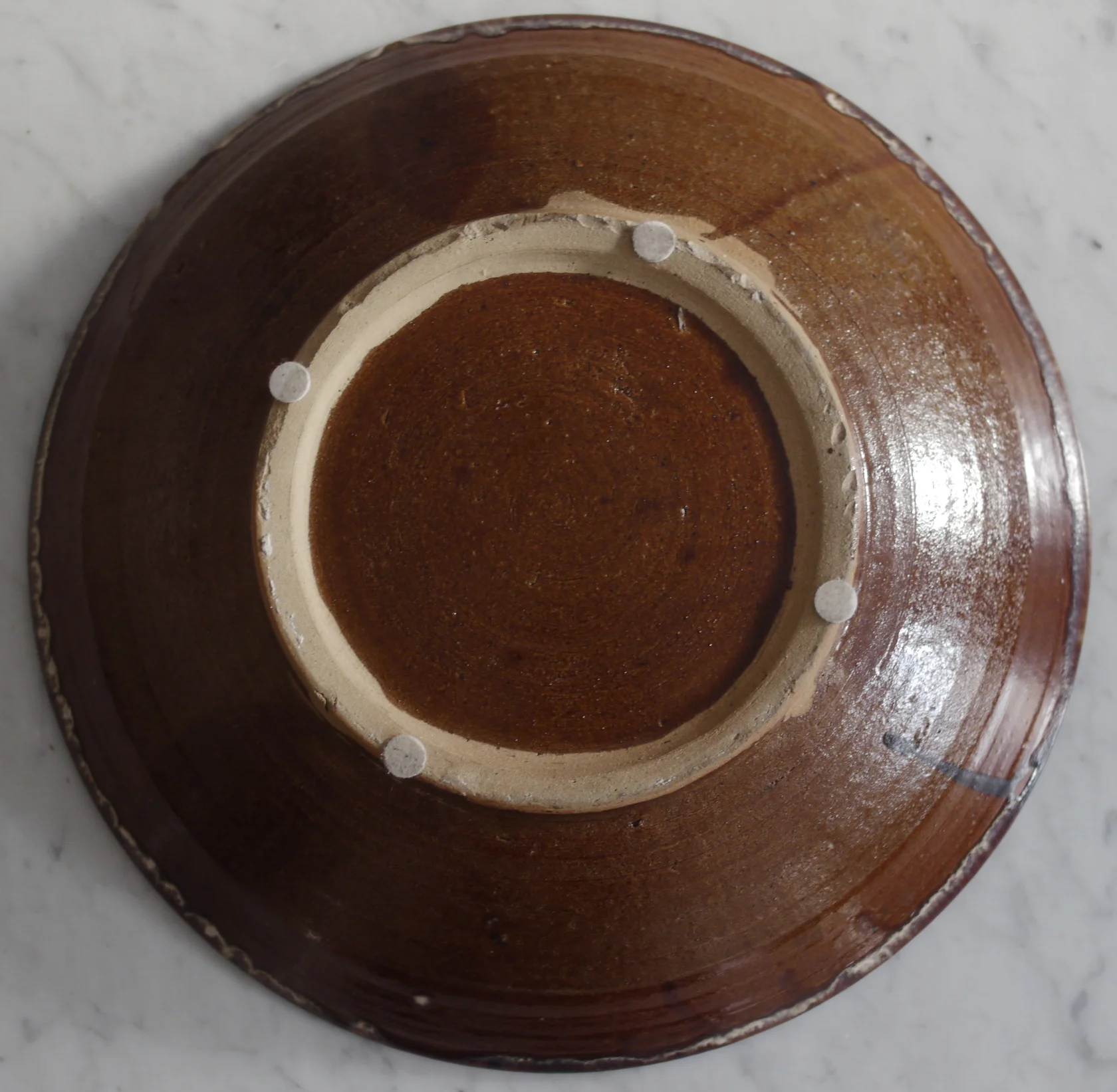Ceramics
Large Dish by Shoji Hamada
Large Dish by Shoji Hamada
Large stoneware dish by Shoji Hamada. 48 cm wide and 10,5 cm high.
White rice husk ash glaze with finger - wiped decoration. The foot ring has damages, see picture.
Bought in Japan in the 60´s by the wife of a Swedish diplomat.
5.500 €
Shoji Hamada, a Living National Treasure in his time, was one of the most influential potters of the 20th century. He spent time working in Mashiko, Japan, as well as St. Ives in England. Hamada was first interested in painting, but discarded it in favor of pottery, figuring, "Even a bad pot has some use, but with a bad painting there is nothing you can do with it except throw it away." Hamada did not receive his training through a traditional apprenticeship, but at the Tokyo Industrial College.
Along with his friends and colleagues Bernard Leach and Soetsu Yanagi, Hamada was involved in spreading the Mingei philosophy and influence in studio pottery. In fact, over the course of his long career, Hamada became both the leading craftsman exponent of Yanagi's Mingei philosophy and, ironically, perhaps the world's most famous potter.
Hamada's work was influenced by a wide variety of folk ceramics, including English medieval pottery, Okinawan stonewares and Korean pottery. His works were not merely copies of the styles he studied, but were unique products of his own creative energy. Hamada had no desire to become a folk potter, but his great respect for the artisan's craft led him to draw as much as possible from folk traditions. Hamada's influence on potters around the world is incalculable, and the village in which he settled, Mashiko, north of Tokyo, has become synonymous with Japanese folk ceramics.


















